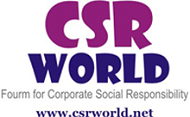NGOs
Banwasi Seva Ashram
Projects
Partners and Collaborators
Over the years, Ashram has been carrying out variety of short and medium term (three to five years) projects in association with governmental as well as non-governmental and national / international funding agencies. These projects are closely linked with the long term programmes of the Ashram. In fact, most of the programmes have grown out of series of multiple such projects.
Ensuring Livelihood Security through Sustainable Farming System (Period : 2008-2014)
Funding Agency : National Agricultural Innovation Project (NAIP) Banwasi Seva Ashram was a partner in this multi-institution project led by Prof. J. S. Bohra from the Institute of Agricultural Sciences at Banaras Hindu University (B.H.U.), Varanasi. The main objectives of the project were
- Development of an economically feasible, socially acceptable and sustainable farming system particularly for the poor/ marginal/ tribal population of the Vindhya region
- Conservation and augmentation of a forest based production system and indigenous crop varieties in the Vindhya region
Banwasi SevaAshram was involved in the grass-root level implementation of the project in 12 selected villages in the Ashram area (Myorpur block). After an initial survey of farmer families in the villages, local committees were formed through election for effective implementation of the proposed development programmes. A major outcome of the project was significant increase in the yield of crops and vegetables in the project villages. Prior to the implementation of the project, the farmers could hardly survive for 5 to 6 months on the farm produce. This period got extended to a full year.
AGRINDUS : Human Resource Development for Gramswarajya (2007-2012)
Funding Agency: Bread for the World- The Protestant Development Services, Berlin
This was the last phase of an ongoing series of projects funded by Bread for the World -The Protestant Development Services, Berlin, since1977. The major aim of this phase of the project was development of capacities for the staff and the functionaries, men as well as women, for village development. In particular, increasing participation of women in the development process was one of the main objectives.
Protecting Child Rights (2011-2014)
Funding Agency : UNICEF,
The major aim of this project was generating awareness among the children, parents and the village community on the rights to education and protection in Myorpur & Babhani block of Sonbhadra district of Uttar Pradesh. The project implementation was carried out in 178 villages from 96 Gram Panchayats of two blocks, namely Myorpur and Babhani, in Sonbhadra district. Major achievements of the project are as follows :
- 1897 out of school children identified and enrolled in school
- 156 villages declared zero out of school children village
- 30 child marriages prevented
- Birth registrations to 1238 new born babies
- One Mahila Gram Pradhan given an award by the Panchayati Raj Officer
- Villagers have become vibrant on child rights and child protection issues
Visible changes as a result of the project are increased awareness on right to education and increased rate of institutional and safe deliveries.
GARIMA Project (2014-2016)
Funding Agency : UNICEF
This project pilots a social and behavioural change in communication strategy on menstrual hygiene management among rural adolescent girls (in the age group 10-19 years, who have experienced, or are about to experience menarche) and among women in Sonbhadra district. A baseline study conducted earlier had revealed that current practices adopted by adolescent girls to deal with menstruation were hygienically very poor. This project is an attempt to address this problem by creating awareness among adolescent girls and their influencers. The main goal of the project was to increase the number of adolescent girls who are able to understand the menstruation cycle and the benefits of menstrual hygiene. The project, besides reaching out to the adolescent girls, gives equal importance to reaching out to the influencers - mothers, peers, older women in the family as well as the teachers and health workers in the community, who build an enabling environment and create space for communication on menstrual health and hygiene. Awareness generation and dissemination of information was carried out through a mix of communication approaches such as group discussions, art competitions, film screenings and distribution of material (booklets) for interpersonal communication. Also, meetings were conducted with the male members in villages for sensitising them about the issues related to gender equality.
Mahatma Gandhi Mission :
The Mahatma Gandhi Mission - Youth for National Construction, an initiative of the Banwasi Seva Ashram, is a project approved by the National Committee for Promotion of Social and Economic Welfare, Ministry of Finance, Government of India. The idea of the Mission was drafted and launched in the year celebrating Mahatma Gandhi's 125th birth anniversary. The aim is to build 125 Mahatma Gandhi Mission centres, Spread across the country. The idea was conceived by late Shri Prem Bhai, the then Secretary of the Banwasi Seva Ashram. The former Chief Justice of India, Shri PN Bhagwati, who was its first chairman, marked the beginning of the programme on the 2nd October 1993. The founder-originator of the scheme, Prem Bhai, wished the scheme to be self financed through voluntary donations from individuals having respect for Gandhian thoughts.
